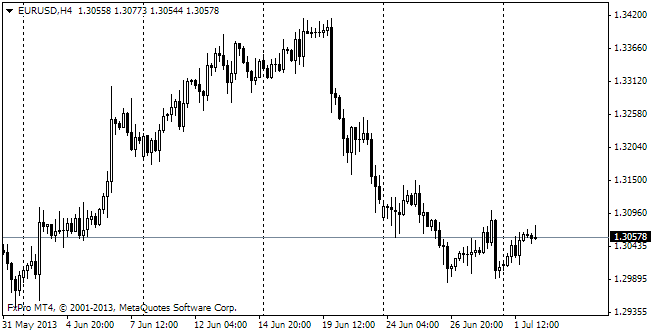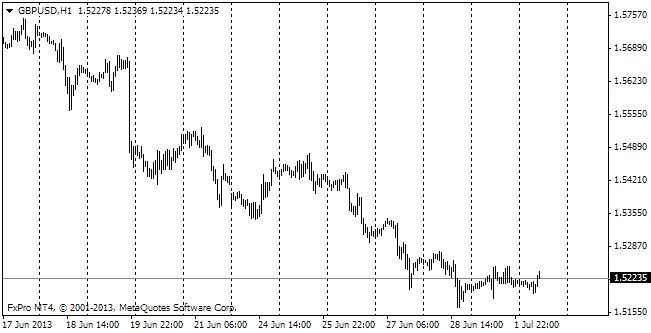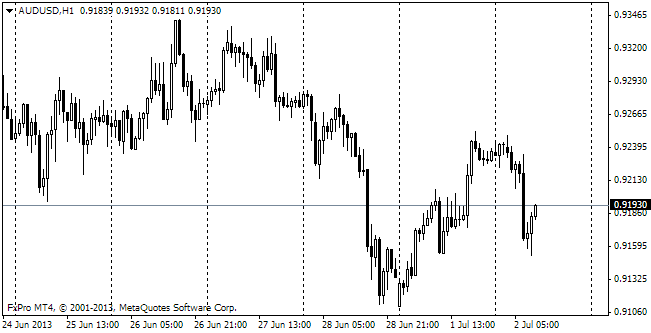EUR/usd
Yesterday was marked with the release of manufacturing statistics. For the most part, the data were quite optimistic. With regard to Europe, the encouraging news was growth of Spanish and Italian Manufacturing PMIs in June. More so, the former totaled 50, which is the highest level since April 2011 and indicates that last month manufacture was not declining. For the last three months this country's index has grown pretty much, which is also true for Italy. Yet the Italian manufacture is still in recession, but the level of 49.1 is the highest since July 2011. The periphery can boast of their manufacture, but not of their employment. According to the recent data, Italy faced unemployment growth in May – it reached 12.3% after 12.0% a month before. These data show that Italy is on the way of increasing labour productivity, where export growth is ensured by the shrinking workforce. It is favourable for the economy, but pernicious for the unemployed. We still believe that enhancing of the country's competitive ability has more advantages. These data will probably help to calm the fears about the sovereign debt crisis in the periphery. Besides, yesterday's statistics on the government budget showed the surplus growth by 8bln in June against the last-year rate (14.1 against 5.8). In other words, the government manages to save, without suppressing business. In our opinion, this is the key difference from Greece, which killed business by budget tightening. Spain, where the number of the unemployed is decreasing (in June the decrease made 127.2K), follows the same path. All in all in 2Q unemployment in the country declined by 270K. The news from the other part of the Atlantic was also not bad. ISM Manufacturing PMI totaled 50.9 in June after the sudden and unpleasant dive below 50 to 49.0. Anyway, it's important that the employment component dropped to 48.7, promising reduction in the number of people engaged in manufacture.

GBP/USD
The only achievement of the pound on Monday was consolidation at the “bottom” a bit below 1.52. And this is with very positive rates of manufacturing activity. The country's PMI grew to 52.5, which is the highest level for over two years. The number of issued credits and mortgage approvals surpassed expectations. But the pound was growing only for a couple of hours after that news. Now it has taken hold of 1.5230, though not firmly.

USD/JPY
The pair is still in demand. This morning it has reached 99.90, but because of a continuous series of constant purchases looks overbought in the short term. Bulls, fear profit taking at 100 or even slightly below it.

AUD/USD
The RBA has kept the rate unchanged at the lowest level in history – 2.75%. It was expected. It's important that the Bank hasn't changed its dovish mood, claiming that the exchange rate may continue to decline in the near future.
